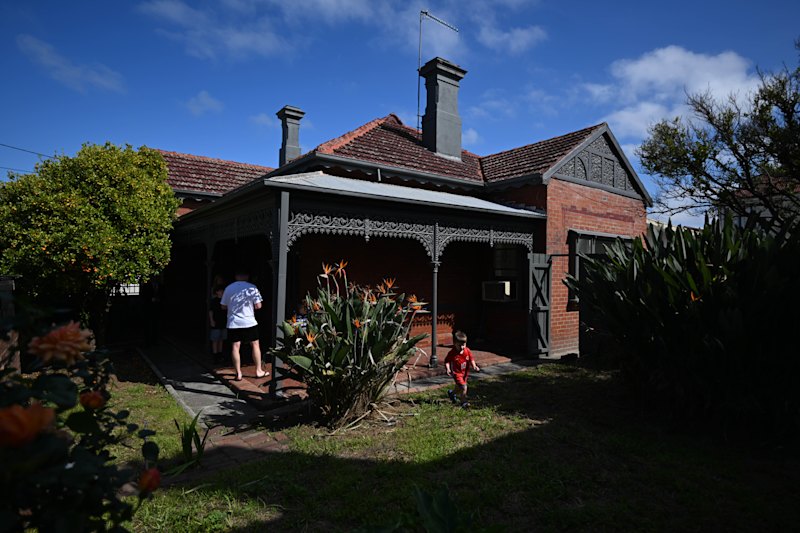What you should look for when buying a partially renovated house
Australia is often thought to be a nation of renovators but despite this perception, almost half of Australians can’t be bothered renovating.
A recent survey by online lender State Custodians found 52 per cent of people would be open to a renovation project for their next purchase but only 19 per cent of people would be keen on tackling a full fixer-upper.
On the other hand, a quarter of respondents would prefer taking on a partially renovated home as a project, with Millennials in particular more open to the idea of buying a half-renovated house.
A partially renovated home could be cheaper than one that’s move-in ready, allowing homeowners to make modifications over time to personalise the property without the stress and expense of a major renovation.
It’s also a way to add value, which explains why young people, who face high entry barriers to the real estate market, are more keen on a fixer-upper, according to State Custodians general manager Joanna Pretty.
“People understand that if you are prepared to put a bit of time and effort into it, you can put your own stamp on it, but it’s also about increasing value,” she said. “Everyone looks at it as an opportunity to make money as well as a home.”
What features should a partially renovated property have?
A home with no structural issues and the basics already taken care of can make the ideal renovation project, according to Alisa and Lysandra Fraser, winners of The Block: Sky High in 2013.
“If the seller has already fixed up a lot of essentials like downpipes, broken paths, flooring and plumbing and it’s just a question of you smartening up some dated interiors – that’s not too bad a deal,” says Alisa.
“Avoid a house that needs structural repairs as they tend to cost a lot more [to renovate],” she said. “Issues with electrical wiring, plumbing, termites or asbestos can really be a nightmare.”
- Related: How to avoid overcapitalising on your renovation
- Related: Affordable renovations to get the best bang for your buck
- Related: The best way to renovate a terrace house
She said buyers should keep an eye out for simple and easy additions. “Can you easily jazz up a courtyard or add in an all-important entertaining deck or patio? Can you knock down a non-supporting wall and create an open-space living area?
“Doing simple renos allows you to put your own spin on a house but also prevents you from overcapitalising too much.”

A home with a previous renovation that’s starting to show its age, such as this semi-detached cottage in Rozelle, can also represent good value, according to selling agent Peter Gordon from Cobden & Hayson. Structural changes have already created a modern layout, allowing a buyer to focus on cosmetic updates.
“You’ve got the benefit of the hard work being done, but you’re not paying for somebody else’s finishes,” he said.
Similarly, this 1866-built property in North Melbourne has seen numerous renovations over the years and while outdated, is in good condition for its age, according to selling agent Mitchell Abraham. “It’s actually liveable and habitable prior to a renovation,” Mr Gordon said.
Properties that are “completely diabolical”, as well as those renovated to a high standard see the most demand, according to Mr Gordon, leaving homes in need of minor cosmetic updates providing good opportunities for savvy buyers.
What are the risks of buying a partially renovated property?
If the scope of works ends up being broader than initially imagined, buyers with limited funds can encounter problems, according to Ms Pretty.
“Unless you can actually happily live with it for a period of time, you have to make sure you have the money to do what you want to do to it to make it comfortable.”
Choosing a property with a functional layout and major works done is the key, Ms Pretty said, as is resisting the temptation to bite off more than you can chew.
Ms Fraser said understanding what you’re up against is the key to avoiding budget blowout.
“If it’s a house that you know requires renovation, request a building and pest inspection before you commit to a sale so you’re aware of what you’re walking into,” she said.
“The main blowouts occur when structural issues are worse than you initially thought, so always leave money for contingency.”
Ms Pretty said buyers looking to add value to a partially renovated home should keep the main reasons they are buying property front of mind.
“Buy it in an area that works for you, where you can make the work-life balance work for you,” she said. “You don’t want to be working on something then have a giant commute to work being a big pain in the neck.”
Renovation checklist: Five ways to avoid budget blowout
1. Make sure it’s structurally sound – Along with a building and pest inspection, enlist a builder to inspect the property prior to purchase and provide a report on the quality of previous work, as well as rough estimates for the cost of works.
2. Look for a functional layout – Moving services such as plumbing is expensive, so look for a property where kitchens, bathrooms and laundries are well-positioned to begin with.
3. Stick to cosmetic changes – Extending or building up is expensive, requires council approval, and can often render the home uninhabitable for months during construction. For first-time renovators, working within the existing building is safer and reduces the risk of overcapitalisation.
4. Avoid half-finished projects – Homes with demolitions under way may seem like a bargain, but buyers are either limited to the original plan, or will need to obtain council approval for any changes. Hidden problems may have caused the vendor to sell, and obtaining finance for a half-finished property can be difficult.
5. Plan for the worst – Changes in financial circumstances, such as the arrival of a new child or a loss of employment, can put renovations on the backburner. Make sure you’re happy to live in the property in its current state, because being forced to sell can be costly.
We recommend
States
Capital Cities
Capital Cities - Rentals
Popular Areas
Allhomes
More







